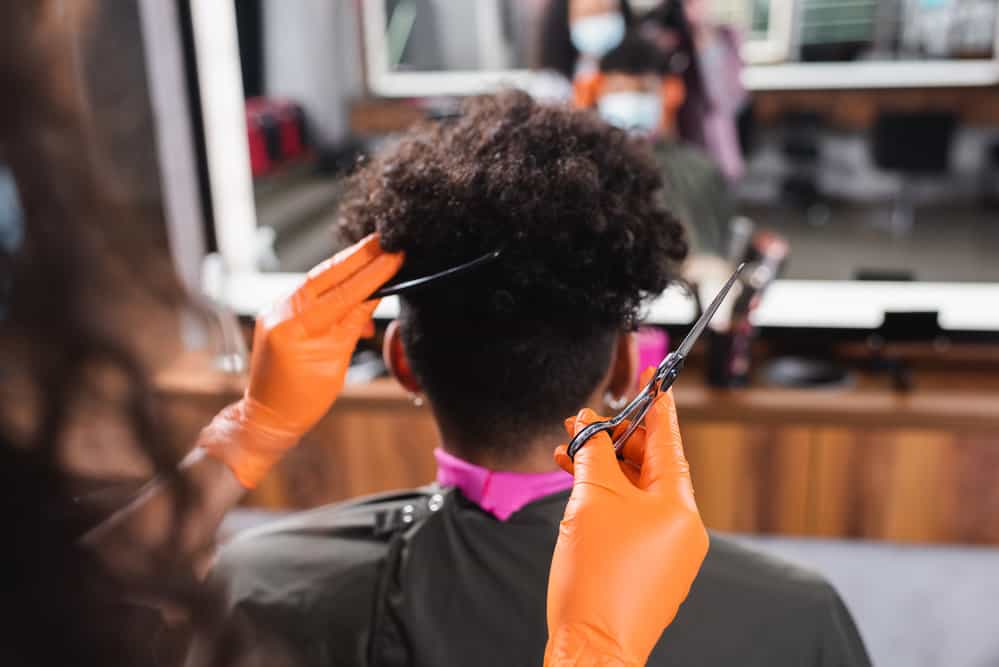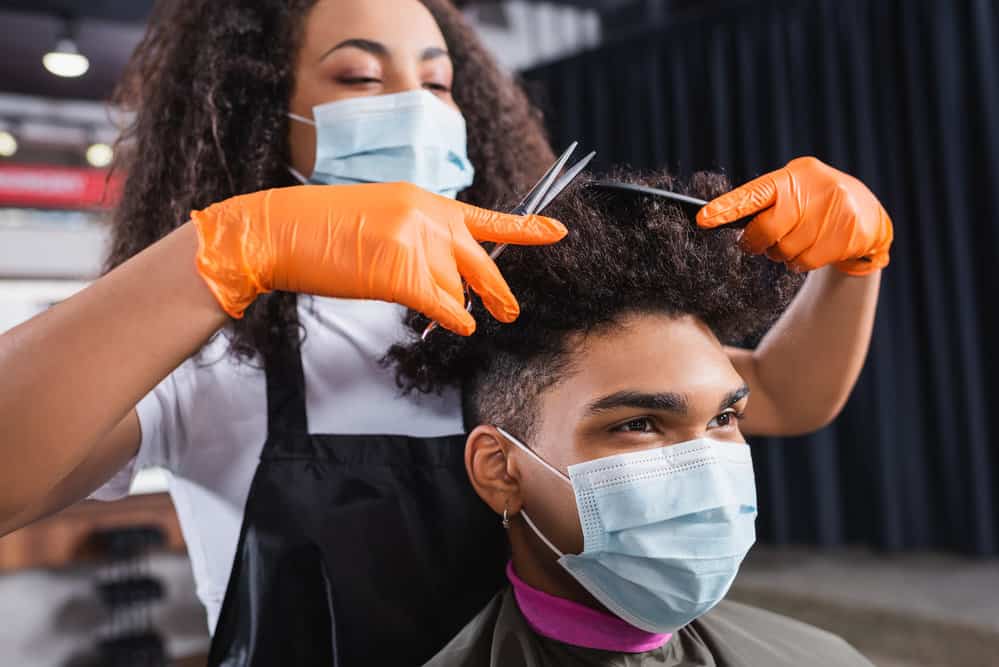
Keeping your hair trimmed is an important part of hair care, regardless of your natural hair type. Many do their trims at home to save on professional trims - should you go that route too?
How much is a trim haircut at a hair salon or barbershop?
To help you decide whether you should go for a professional trim or save money and DIY, we're going to tell you how much a trim haircut costs. We'll also fill you in on what a trim is, what it entails, and much more. Let's get right into it!
Table of Contents
How Much Is a Trim Haircut?
A typical trim may cost anywhere from $20 to $100, depending on the length and thickness of your hair, the experience level of the stylist, and more.
Here are a few things to keep in mind when estimating a trim’s cost:
- The length and thickness of your hair: The longer and thicker your hair is, the more time it'll take to cut and the more you may be asked to pay. Not every stylist will charge extra, but you should be prepared just in case it happens.
- Your stylist’s experience level: Experienced stylists typically charge more for their services, whereas new stylists often offer deals.
- The salon’s location: Salons in well-known cities often command a higher price tag than those in lesser-known cities. So, if you live in Atlanta, Los Angeles, or Chicago, you'll probably end up paying a premium for your cut versus smaller cities.

- The type of salon: Many hair salon chains price their cuts relatively low. They see a lot of clients a day, so they're able to keep their prices on the lower side. On the other hand, Mom & Pop Salons may charge higher prices, given that they don't generally have as many people coming in. They have to make sufficient cash off of fewer customers. That's one potential reason your trim may cost more at a Mom & Pop salon. There are also luxury salons, where, generally speaking, every hair service is expensive.
- Whether you opt for extra services: If you go in asking for just a trim, your overall cost would be lower than if you opted for add-ons like a wash, conditioning treatment, or scalp massage.
This is not an exhaustive list of factors affecting trim costs.

The bottom line is that there's no one-size-fits-all answer to the question of how much a trim costs - there are so many variables in play. But feel free to go by the range mentioned above.
What Is a Trim Haircut and Why It’s Cheaper?
A trim is a type of cut where just a little bit of length is taken off the ends - usually a quarter of an inch. The stylist or barber will cut off the preferred amount of length with hair-cutting shears.
The goal of a trim is to remove split ends and damaged sections of hair, giving the hair a healthier overall appearance. A trim can also help shape the hair and make it easier to style.
A trim is generally cheaper than a typical haircut, as haircuts typically involve:
- Removing more hair length than a trim
- Creating new layers or correcting how the hair falls
- Styling the hair in a new way
All of these things take more time and effort than a simple trim, so it makes sense that they cost a bit more.

How Often Should You Get a Trim?
Your ideal hair trim frequency will depend on several factors, including your hair type, hair growth rate, and personal preference. That being said, there are a few general guidelines that experts recommend.
If your hair is on the healthy side with minimal split ends and damage, you can get away with getting a trim every 8-12 weeks. You'll need to get a trim more often in cases where your hair is dry and/or damaged.
Curly hair tends to be more prone to damage and split ends than straight hair.
Ultimately, how often you get a trim is up to you. However, if your hair looks unhealthy, develops more split ends, or is getting more difficult to detangle and style, it's probably time for a trim.

What Are the Benefits of Getting a Trim?
Many put off trims because they're unaware of their benefits. After you read the below benefits, you'll realize that trimming your hair is one of the best things you can do for it. Trim benefits include:
1. Less Split Ends
Split ends may occur for a number of reasons, such as heat damage, over-processing, and more. Regardless of the cause, they can make your hair look unhealthy and jumpstart breakage. A trim will eliminate those split ends and leave your hair visibly healthier.
2. Fuller Hair
If your hair is looking a little limp and lifeless, especially at the ends, a trim can give it a much-needed boost. After a trim, your ends will appear more blunt, which creates the illusion of fullness.
3. Less Breakage
If your split ends are left to worsen, they will continue to travel up the hair shaft. Eventually, this will lead to breakage. Getting a trim will eliminate those split ends before they have a chance to cause breakage.
4. Better-Looking Hair
Split ends make the hair look dusty, dull, and frizzy. With those ends gone, you’ll enjoy smoother, sleeker, healthier-looking hair. And as a bonus, styling will be less of a chore since you won’t have to tame a bunch of unruly hair.

Should You Trim Your Hair at Home?
There are a few things to consider before trimming your hair at home. For one, haircutting is a precision job that is best left to the professionals when possible.
Even if you're just trimming a little bit off the ends, it's easy to accidentally take off too much. It's also important to have the right tools. If you don't have high-quality hair-cutting shears, you run the risk of damaging your hair.
In general, we recommend visiting a salon or barbershop to get your hair trimmed.
However, if you're on a budget or can't make it to a salon, you can trim your hair at home. Just be sure to proceed with caution and be extra careful not to take off too much length. Once your hair is cut, you can't make it magically reappear.

An Alternative: Dust Your Ends
You can try dusting your ends if you don't want to commit to a full-on trim. This is a great way to get rid of any split ends and damaged bits without taking off too much length.
To dust your ends, wash, condition, detangle, and towel dry your hair. Then put your hair in small twists and snip off the very tip of each twist. You may be hesitant at first, but it’s incredibly easy.
And it's a whole lot better than waiting months (or even years) between trims.
If you do decide to dust your ends, we recommend using sharp, high-quality hair-cutting shears. Dull scissors can create jagged ends.
- What's a Trim Haircut?
- How to Cut Split Ends on Natural Hair
- Scissors for Curly Hair
- How Much Hair Is Cut Off in a Trim
- How Much Do Hair Stylists Make
So, there you have it - the cost of a trim haircut, its benefits, and an at-home alternative you can try today. If you want professional trims, prepare to pay at least $20 for the service.
Professional trims are 100% worth it for many, but you’ll have to determine which route is best for you. We hope this article has helped answer some of your questions so you can make an educated decision for yourself and your hair. We wish you the best of luck!




